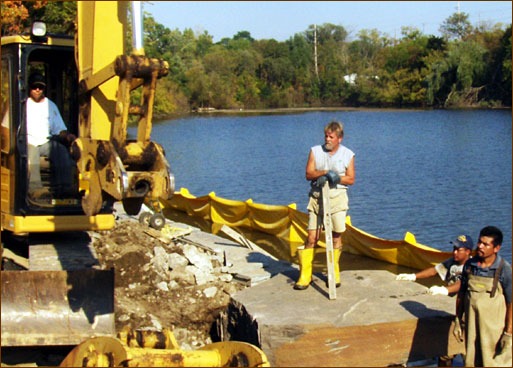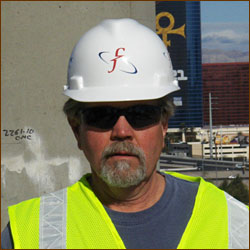March 2009: My Masonry Life Story - Tom Mahany
Words: Dan KamysMarch 2009
My Masonry Life Story
Tom Mahany:

It is difficult to tell the story of how Tom Mahany became a stonemason without first telling the story of his heritage. Mahany actually descended from a family famous for its medieval fortresses in southwestern Ireland. His great-great grandfather, Cain O’Mahony, emigrated from Ireland in 1837, having boarded one of the “coffin ships” bound for Canada laden with Irish peasants hoping for fertile land and a free existence. O’Mahony eventually settled on the upper reaches of the River de Chute, a tributary of the St. John’s River about 150 miles north of its mouth. Believing he was still in Canada, he built a substantial cabin with a grand stone chimney on the banks of the “Chute”. At that time in the late-1850s, a team of international surveyors came through his land, officially establishing the boarder between the United States and Canada. His home and most all of the cleared land were on the American side in northern Maine.
In 1864, as a member of the Union Army, O’Mahony was wounded at the Battle of the Crater outside Petersburg. Nevertheless, he returned home safely, using his enlistment bonus to advance the welfare of his children. He built a new house, cleared more land and started raising potatoes commercially – a family business that remains prosperous to this day, although it has mostly moved to western New York.
As the Mahanys (the spelling is now Americanized) were establishing their potato farms in northern Maine, other Irish immigrants were pouring into New York City and migrating up the Hudson Valley. With the sidewalks in New York City still being made of wood in the mid-19th century, it wasn’t long before the Irish were bringing Bluestone down out of the Catskills. The site of the first quarries was the Ashokan Valley not far from the present day town of Woodstock. The valley has since been flooded to supply drinking water for the city, but Mahany still visits the area frequently in his never-ending search for new sources of quality Bluestone.
Mahany was born on the Chute in April 1947, and his family moved to western New York in December 1949. In summer 1956, the family moved to town. His father left the farming business to his brothers and went to work for the state government. They moved first to Riverhead on Long Island, and in November 1957, they relocated to Oneonta, N.Y., on the western edge of the Catskill Mountains. In summer 1961, Mahany took a job as a seasonal laborer on a dairy farm in Roxbury, about 30 miles from his home. A little stream ran through the farm, just down the hill beyond the barn. That stream is the headwater of the East Branch of the Delaware River, cutting through the center of Bluestone country. The American colonists had cleared the farmland during the late-18th century. As Mahany rode his tractor through the hayfields, he had time to ponder the elegant, yet simple, stone walls that marked the edges of the fields. He spent the next three summers working in these mountains that are now the home of the Bluestone industry.
|

|
Mahany graduated from high school in 1965, entering the United States Military Academy at West Point just as President Johnson was ramping up the country’s commitment in Vietnam. As a cadet, he often found himself at odds with the commonly accepted attitudes of many upperclassmen concerning the war. As a result, he spent more than his share of the time walking the area, which left him plenty of time to ponder the fine granite veneer work on the regimental barracks. Additionally, in spring 1968, he found himself reassigned to the Infantry as a PFC and, shortly thereafter, deployed to Vietnam, where he had occasion to ponder the art of stacking sandbags.
Mahany returned home in 1969 and began to study painting at the Rochester Institute of Technology. In 1971, he transferred to the University of California at Berkeley. He graduated in 1973 with a Bachelor of Fine Arts degree, and promptly got a job as a carpenter.
?? |
By 1975, he began taking on jobs installing local fieldstone walls around hot tubs in Sonoma and Marin counties in northern California. He acquired a contractor’s license in 1977 and formed his own company. That company, Eldon Precision Stone, is now based in Royal Oak, Mich. Mahany builds almost entirely with New York and Pennsylvania Bluestone and specializes in the dry-stack method, believing that gravity is still the best mortar ever.
“I have spent the best part of 35 years now selecting and installing natural stone,” Mahany says.??“I firmly believe that I have reached the level of master facilitator, qualified to design, specify and supervise structural stone installations of any scale.”
As a member of the New York Bluestone Association, he hand-selects, mostly in the Catskills and Adirondacks, all of the stone employed on any site with which he is associated.
Return to Table of Contents